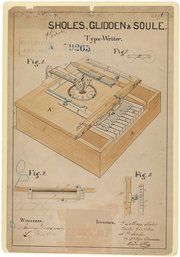GARY
LEHMANN
The following four poems were inspired by an art
exhibit that was on display at the Bruce Museum in Greenwich,
Connecticut, from 27 January 2007 to 29 April 2007. The exhibit “Painterly
Controversy” focused on the turn-of-the-century conflict
between New York artists and teachers William Merritt Chase and
Robert Henri.
Behind the Mask
To the world, the New York art teacher
William Merritt Chase looked to be all of a piece.
His elaborate studio on 10th Street conveyed
the very essence of cosmopolitan sophistication.
His tapestries, paintings and furniture defined
tasteful decoration for a whole generation.
In accoutrement, his brushed top hat and
pince-nez eye glasses, pinched at the nose,
were the statement of gentlemanliness,
as was his always-fresh boutonnière,
but, when he took up canvas and mixed paints,
when he had a worthy subject before him,
all that restraint resolved itself into a flurry
of spontaneous brush strokes guided
by years of unharnessed animation.
The eye no longer guided the hand.
It followed instinctively
tracing the images of the mind.
All visual objects are but a pasteboard mask,
says Melville of the world at sea.
A Matter of Artistic Differences
The conflict between New York
art teachers
Robert Henri and William Merritt Chase
came down to a baseball game
between their two classes in 1907.
Barbs in the press and years
of emerging conflict sharpened the edge.
The game started civilly, but degenerated quickly.
A student at first base tripped the baseman just as the ball was
struck.
A fielder purposely hit a runner with the ball.
A fight broke out which spread like fire through the dry stands.
The police were called to break it up.
“An artist must first respond to his subject,”
Henri told his bloodied class the next day,
referring to art – of course.
Showing Off
To prove his skill more than to teach his art,
William Merritt Chase did a complete portrait
before his adoring class in little more than an hour.
He picked out a bright young girl from the class
with sparkling eyes and lovely flowing blonde hair.
He posed her on a stool and smiled at her warmly.
With bright, contrasting colors on a black background
he accomplished a sensitive portrait
with little more than a slap and a drag of the brush.
Then, he bowed and gave the young lady his hand
to descend from the stool. With a flair for the dramatic,
he gave her the portrait and kissed her hand.
It looks like art to me
When art teacher William Merritt Chase took his class to Holland,
he particularly wanted to visit the paintings of Frans Hals.
He saw in the Dutchman a talent that was very modern. Imagine his surprise therefore when his students pointed out
that their revered instructor appeared very much like the image
of Colonel Johna Claeszoonlov rendered by Hals in 1633.
Chase was so delighted that he had a local tailor make up
the costume of a Sergeant of the Civic Guard of St. Adrian
so he could sit for a self-portrait in the manner of Frans Hals.
How splendidly proud he appears in the finished painting.
The slightest twinkle bejewels his smile as it pokes through his
over-sized moustache and excessively articulated goatee.
Back to Top
Review Home
|
![]()
 REVIEW
AMERICANA
REVIEW
AMERICANA